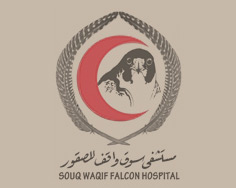Common Diseases in Falcon
« BackLung worms – Serratospiculum spp.

Ways of infection by lung worms
1. Falcons feeding on beetles carrying this parasite
2. The use of contaminated equipments mostly containing eggs of these parasites
1. Difficulty in breathing
2. Inability to fly
3. Reduced stamina
4. Inability to fly long distances
5. Sneezing and coughing
- Aspergillosis
- Air sac infection
- Lung infection
Diagnosis
1. The physical symptoms shown by the affected falcons
2. Direct microscopic examination of the faeces
3. EndoscopyTreatment
There are different types of anti-parasitic medicines for treatment for this kind of worms; among them are Ivermectin, Doramectin and Moxidectin. Worms can also be removed by endoscopy after 3-5 days from starting treatment.
However in some do not recommend the removal of the worms by endoscopy because of the following;
- This manoeuvre has been criticised by some because the worms will be disintegrated and absorbed by the body after a few weeks from the start of the treatment.
- In some cases the worms will be covered by a huge amount of capillaries that can lead to internal bleeding if removed by endoscopy.
Prevention and control
1. Make sure birds used to feed the falcons are healthy
2. Not allowing any insects that may be carrying the parasite to enter the cages or rooms where the falcon is being kept.
3. Do not use contaminated equipment
4. Regular examination of the falcon faeces.










